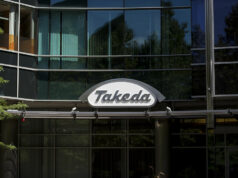
Editor’s note: This is the part of a series of articles emerging from an invitation by the Israeli Export Institute to Arundhati Parmar, editor-in-chief of MedCity News, to participate in the MedinIsrael conference, the 5th international digital health conference and expo, March 25-28 in Tel Aviv. Parmar participated both as an attendee and speaker. All travel and related expenses were covered by the Israeli Export Institute, a quasi-government entity.
Telemedicine as a technology is gaining ground all over the world. How it is being used on an oil platform in Brazil provides a fascinating look at how effective it can be both as a means to deliver care and in lowering costs.
The story was shared by Dr. Eduardo Cordioli, general telemedicine manager at the Hospital Israelita Albert Einstein in Sao Paolo, Brazil. Cordiolo was a speaker at the recently-concluded MedinIsrael digital health conference in Tel Aviv, which aimed to highlight how Israel has adopted digital health as a national strategy and where the technology is globally.
Hospital Israelita Albert Einstein is a teaching hospital, with a medical school and separate nursing school. The main hospital, which is a private hospital, has 650 beds but executives also manages two public Brazilian hospitals together with the city where they are located and the Brazilian ministry of health. They also have locations for clinics and ambulatory care. It employs 14,000 people.
Caring for oil platform workers far from the mainland is tricky and in virtually all instances prior to the launch of the telemedicine program required urgent, immediate evacuations from the platform via a helicopter to a hospital on the mainland with the necessary resources.
But in 2017, the hospital conducted 965 telemedicine visits between urgent care nurses on the oil platform and physicians at the hospital on the continent. Here’s the type of connected devices – shown in the presentation – that the telemedicine program relied on for diagnosis.

Of those 965 appointments, a whopping 93.2 percent let to patient discharge. Only 6.8 percent of the visits therefore needed evacuations – that’s a 50 percent reduction from when the telemedicine program was not in place, Dr. Cordioli said. And there appears to be an even better statistic. Of those 6.8 percent requiring evacuations, the majority — 71.4 percent —required non-urgent flights.
Previously, the evacuations were a 100 percent urgent evacuations as the urgent care nurses on the oil platform would not have been able to judge the acuity of the problem. Urgent helicopter evacuations are far more expensive than planned ones, Dr. Cordioli explained.
Later, in an interview Dr. Sidney Klajner, president of the Hospital Israelita Albert Einstein, said that through the telemedicine program, even myocardial infarctions or heart attacks, were able to be diagnosed.
Since the telemedicine program was launched in 2012, the number of video visits have seen an exponential increase. Just in the last three years, the number of appointments went from 7,000 in 2016 to 45,000 in 2017 to 80,000 video visits in 2018.
“We have a huge country and there is a lot of differences between the states. We have rich states like Sao Paolo, Sao Paolo city and the southeast of the country but we have very poor regions also with people who have no access to medicine to care and specialists for example,” Klajner said.
Telemedicine attempts to bridge this very gap. For instance in the northeast portion of Brazil, there is a shortage of specialists and so in ICUs, the telemedicine program is aimed to connect “generalists” with specialists like neurologists and cardiologists. These specialists are now responsible for a certain number of “virtual beds,” he explained.
Aside from this, the hospital has also created a proprietary dermatology app to help in diagnosing skin problems remotely.
“The team can suggest diagnosis or urgent biopsy based on the picture [through the app] and the patient history,” Klajner explained.
He noted that the focus on telemedicine is only part of the digital transformation that is underway at the hospital. Another big change was the removal of an innovation center from the hospital’s research institute about four or five years ago. The innovation center was created to rapidly innovate, prototype and validate ideas within the hospital ecosystem. This is both meant to encourage innovative thinking among hospital employees including physicians and encourage external collaboration.
For instance, a year and a half ago an incubator was created, he said. More than 1,000 Brazilian startups have been able to submit their ideas. The hospital has also acquired a health IT startup that has developed a next-generation sequencing software.
So, it’s not just telemedicine that the health system that serves nearly 1.5 million people is looking at for a digital transformation. But the telemedicine story on the oil platform is certainly compelling.
Photo: Roy Habani








